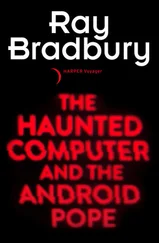Then there’s Paul Lutus, the fabled programmer-hermit of the Oregon wilderness. Paul exemplifies the legend of the eccentric character with a knack for programming who made himself a millionaire by writing a best-selling program while living in his backwoods cabin.
The third programmer profiled here is another one of those who can’t be excluded from any history of the software industry, although I don’t know him personally. John Draper didn’t make himself a millionaire like Lutus, or create a masterpiece of programming elegance like Bill Budge, but he was perhaps the first of the maverick techno-wizards because of his past career as a colorful anti-hero known as “Captain Crunch,” king of the “phone phreaks” (until he was busted for playing with the phone company’s switching network without paying for the privilege). Years later, a program he wrote led to one of the first and biggest entrepreneurial coups of the software gold rush.
Indeed, aggressive entrepreneurship has been one of the major forces behind the phenomenal growth of the software industry. Most of the early software entrepreneurs were programmers who discovered that they could make a lot of money marketing their own programs. Others saw the opportunity to make fortunes by marketing other people’s products. Bob Leff and Dave Wagman, for example, founded a software distribution business that went from a shoestring budget to a $150 million annually in a little over four years. They distributed Broderbund’s products when we first started publishing, and they even bought us disks when we couldn’t afford to fill their orders.
Unlike me, Bob and Dave are the kind of successful entrepreneurs who take advantage of all the high-life perks of their occupation—from the champagne they gave away to their suppliers to the matched Porsches they bought for themselves. Like all the most successful entrepreneurs in the software Wild West show, they also work twelve to eighteen hours a day.
My friend Ken Williams has a different kind of entrepreneurial story altogether. Still living out his own brand of fantasy up in the Sierra foothills, he and his wife/partner, Roberta, and their tribe of well-heeled programmers make up the single largest component of the workforce in Oakhurst, California, and are the dominant cultural element in a territory where the last big action was the gold rush of 1849. Less than four years after Roberta convinced Ken to program the adventure-fantasy game she had designed, their company, “Sierra Online” (now called “Sierra”), reached a level of more than $6 million in annual sales.
Ken and Roberta’s company was one of the first and most successful of the software publishers—companies like Microsoft, Brøderbund, Sirius, Synapse, and a dozen others profiled here, that concentrated on marketing products created by in-house or freelance programmers. A small number of these companies, most of them associated with Apple-oriented products, most of them located in California, were, along with Brøderbund, part of a loose group of friendly competitors I’ve called the Brotherhood.
Then there are the developers, who came along a little later than the first publishers. Developers come up with the ideas for new programs and hire programmers to create these products, which will then be sold or licensed to software publishers for marketing. Some of these developers, like Joyce Hakansson, concentrated on a specialized segment of the industry, such as educational software. Others specialized in games or productivity software. Some developers were either started by or backed by venture capitalists—groups of investors who often guided (and occasionally took over) the management of the companies they invested in.
Not all the software entrepreneurs were programmers, distributors, publishers, or developers. There were those like Al and Margot Tommervik, founders of Softalk magazine, whose focus was on the personal computer culture. In the case of the Tommerviks, their market and their community encompassed that segment of the computer subculture who were devoted to the use of Apple computers. The Tommerviks, who started their first magazine with the money Margot won on a television game show, were among the more prominent casualties of the software shakeout.
Because the computer revolution is a worldwide phenomenon, and because my own company in particular has had a long history of dealing with Japanese software companies, I have also written about Japan’s software community and industry. Even as the companies mentioned in the foregoing paragraphs struggled to create an industry in the United States, a parallel struggle was taking place in Japan. There, hobbyists followed the development of microcomputers with every bit as much interest and enthusiasm as their American counterparts. And in response to the growing market in Japan for products made with or for microcomputers, a small group of Japanese entrepreneurs emerged to build a fledgling industry in their country.
Computer addiction knows no national boundaries, it seems, and it appears that Japanese hobbyists are no more immune than Americans to the lure of entrepreneurship. Consider Masaaki Hoshi, who founded I/O, now the largest microcomputer magazine in Japan, strictly as a part-time enterprise to help him keep in touch with other hobbyists. As so many of the cottage entrepreneurs did here in the United States, he started small in 1976 and got caught up in a wholly unexpected wave of consumer enthusiasm for what had, until then, been interesting only to a small group of hobbyists.
Or consider Akio Gunji and Kazuhiko “Kay” Nishi, who worked with Hoshi until they saw an opportunity to compete with him. In 1977, they started their own magazine, ASCII, which they then used as a base to turn their operation into an empire that included one of the largest software publishers and distributors in Japan, and several of the most successful magazines in the industry as well.
One of the people who occasionally wrote articles for I/O and ASCII was Yuji Kudo, an amateur photographer and avid collector of model steam locomotives. When he started his own software company, he named it after his favorite locomotive and turned Hudson Soft into Japan’s largest microcomputer software publisher. Another successful entrepreneur in Japan’s software world was Jung-Eui Son, a software distributor and publisher who started his own magazine when his competitor’s magazines wouldn’t take his advertising. His distribution company, Soft Bank, which he started when he was a teenager, ended up as the largest microcomputer software distributor in Japan.
More than a few other software people have not yet been introduced, although their stories are told in later chapters: Among these are Mary Carol Smith and Don Fudge of Avant Garde Productions: Nasir Gebelli, the first superstar programmer: Scott Adams of Adventure International, my own first publisher, whose business has been eclipsed by those companies founded by many of his former employees: and Bill Baker, the twenty-one-year-old deal maker who built a company on the basis of one of John Draper’s creations, then sold the company for $10 million on the eve of the shakeout.
There are still more whose stories we’ll encounter along the way. For now, we’ll start at the beginning of the personal computer era, way back in the “ancient” days of the mid- 1970s, when the first microcomputer kits were assembled by many of the people who were to become the leaders of today’s microcomputer software industry.
I THE BIRTH OF AN INDUSTRY
In the beginning was the IBM mainframe. The microworld was formless and devoid of software. On the first day, Intel brought forth the 4004, fashioned from the Silicon of the Valley. MITS said ‘Let there be Altair,’ and the microcomputer was created. Then Microsoft, created in the image of Gates, begat the microcomputer software industry. The hackers were the first prophets, and the homebrewers were the patriarchs, but the children of Intel remained in bondage until the Woz led them to the promised Apple with one bite missing. . . .
Читать дальше










